adaptive clothing
overview
During a class that I took on Inclusive Design, I learned a lot about accessibility as it relates to the products and systems that we use on a daily basis. As someone who is not living with a disability, I never previously considered how difficult it can be for some people to complete important tasks, such as getting dressed in the morning or cooking dinner.
Because I love fashion, this peaked my interest in the adaptive clothing movement, which focuses on creating fashionable garments for people with disabilities. For example, many adaptive clothing pieces have magnetic closures instead of buttons or zippers to make them easier to take on and off.
Furthermore, many of these clothing items do not have tags and are made with soft fabrics to help those who are sensitive to certain materials and textures. After learning about this movement, I decided to try my hand at designing some adaptive clothing items of my own.
-
Personal Project
-
January 2022 – May 2022
-
Accessibility
-
Sewing (Hand and Machine), Garment Construction, Patterning, Sketching
-
Sewing Machine, Iron and Ironing Board, Scissors, Needle and Thread, Magnets, Buttons
research
I started by doing research to determine some common characteristics of adaptive clothing. Here is what I found:
Use magnets and Velcro instead of buttons, zippers, snaps, hook-and-eyes, etc.
Items should be easily adjustable. For example, use an elastic waistband, create different settings for waist and hem lengths, or create the ability to remove single sleeves or pant legs.
Create extra width at the bottom of pant legs.
Include Velcro at the neck/shoulder area to make the neck wider and easier to put a head through.
Use comfortable, soft fabrics and avoid the use of itchy seams and tags.
brainstorming
After vetting many different potential designs, I decided to go with the sketch below, which is a halter top and matching mini wrap skirt. Because most halter tops fasten by tying the straps together in the back which can be difficult, I decided to lengthen the straps, cross them in the back, bring them around to the front of the body, and fasten them together with an invisible magnetic closure. This created a unique design and made it easier to put on by moving the closure to the front and eliminating the need to tie the straps together in the back.
I also made the top adjustable by placing a row of four magnets inside the bottom strap, so that it could be pulled tighter or looser to fit multiple different sizes. Furthermore, I placed a button on the outside of the top strap to create a fake button closure.
Similarly, I designed the wrap skirt to include a row of invisible magnet closures with buttons sewn on top to create the look of a button closure while making sure that the garment remains easy to take on and off. I also decided to use a soft rayon fabric to ensure that both pieces would be comfortable and not itchy.

Fashion Sketch of Final Designs

Initial Wrap Skirt Concept
making the pieces
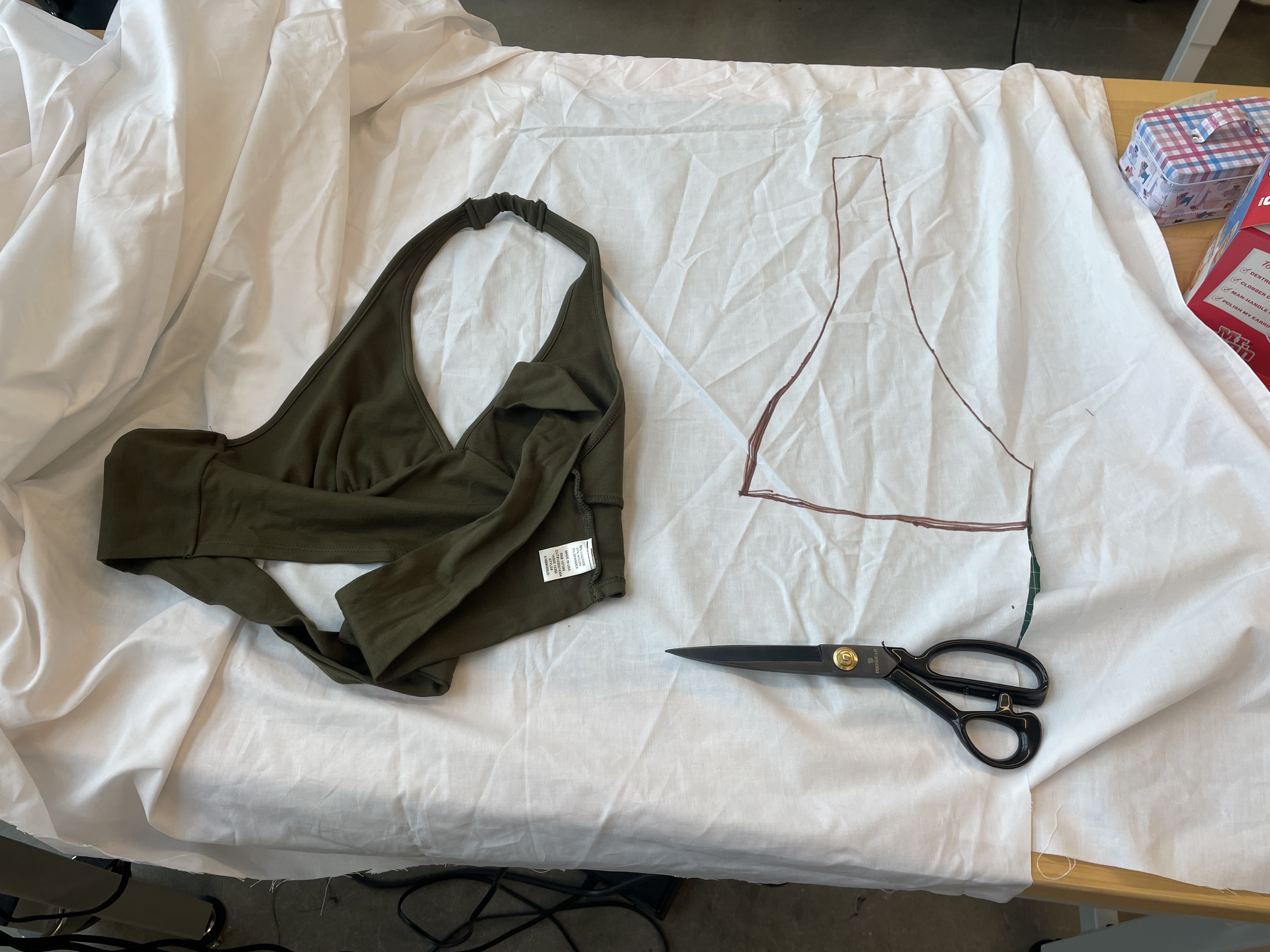
Tracing my top to create a pattern
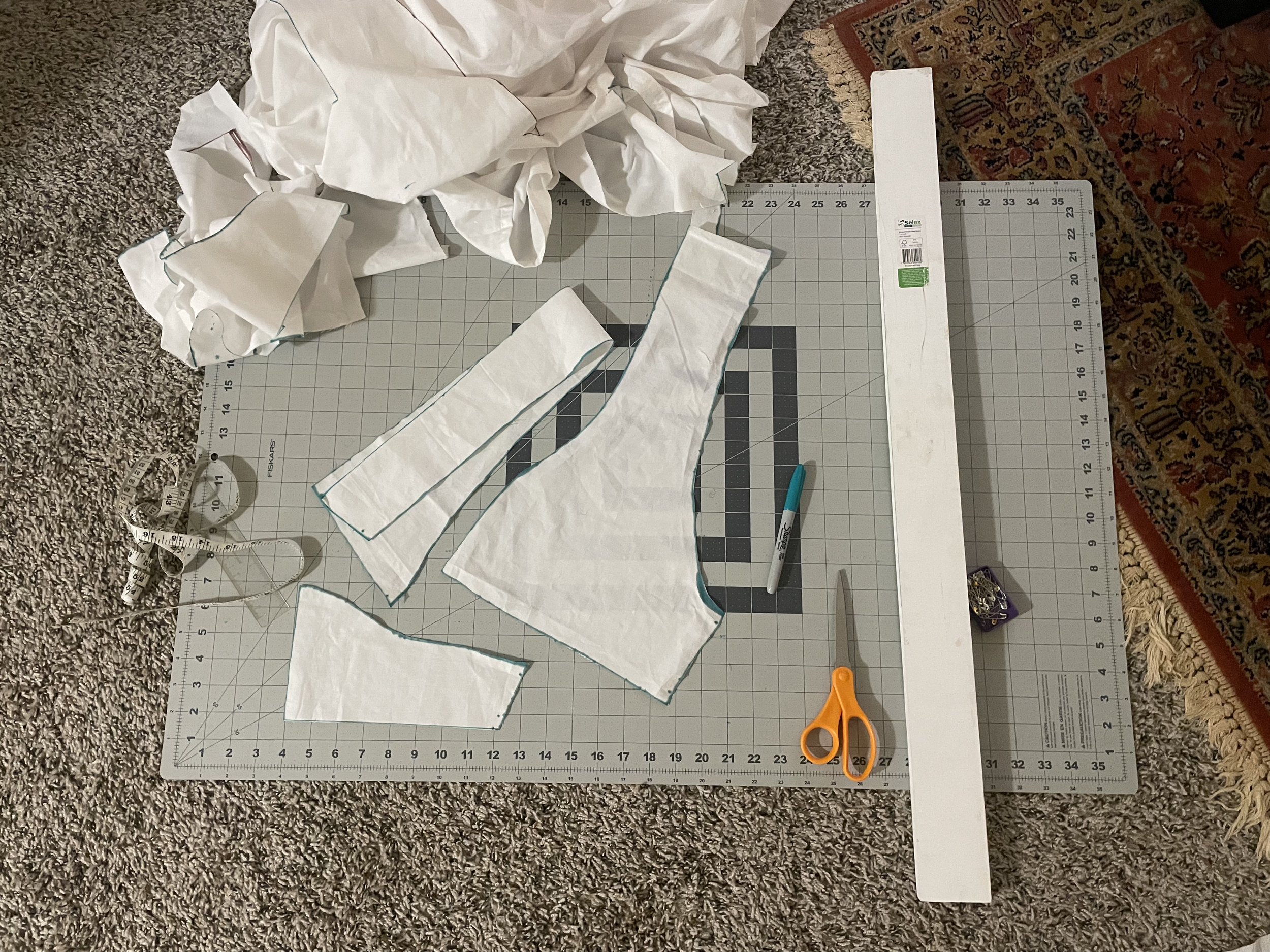
Final pattern pieces for the top
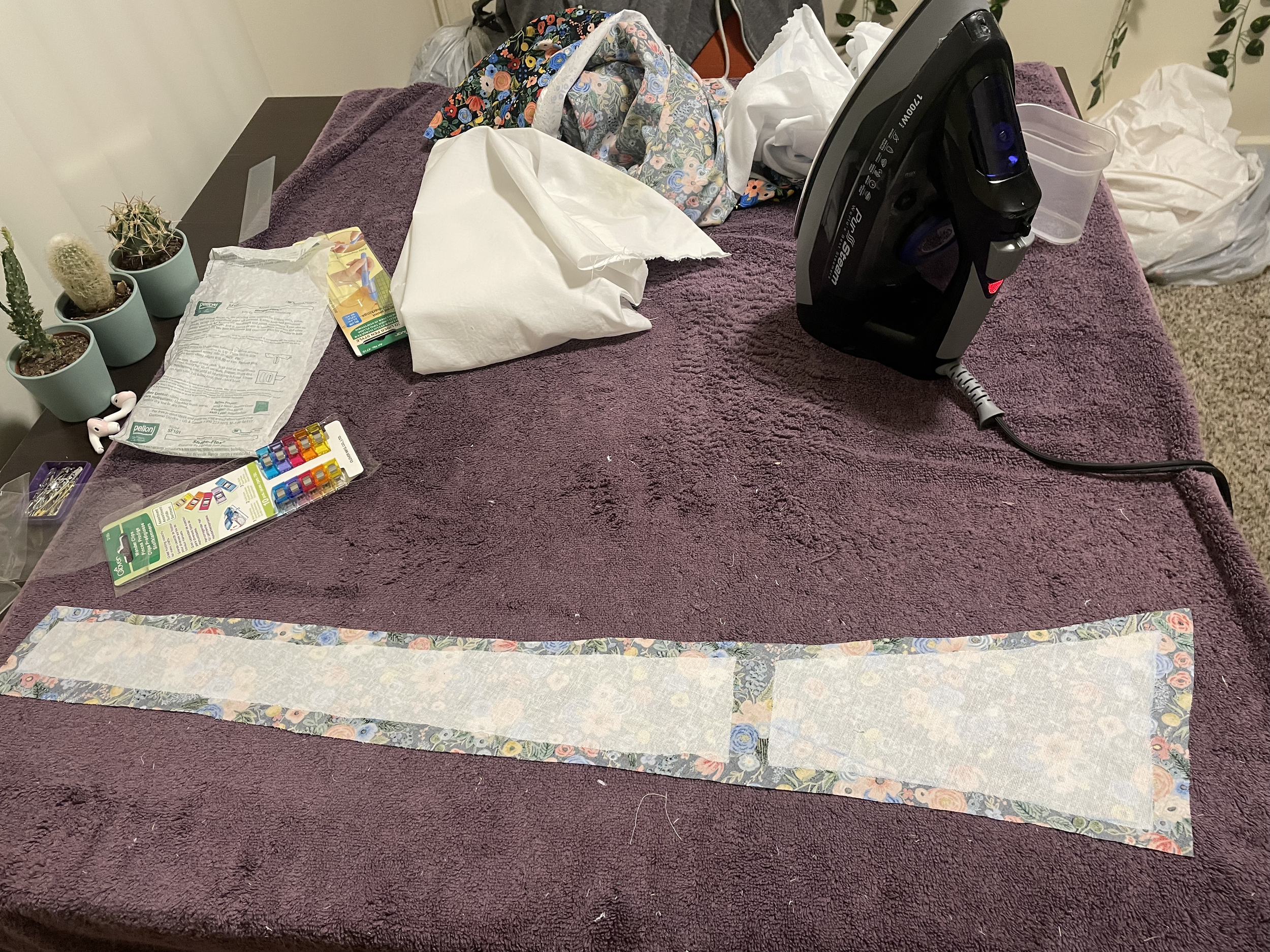
Interfacing one of the top pieces
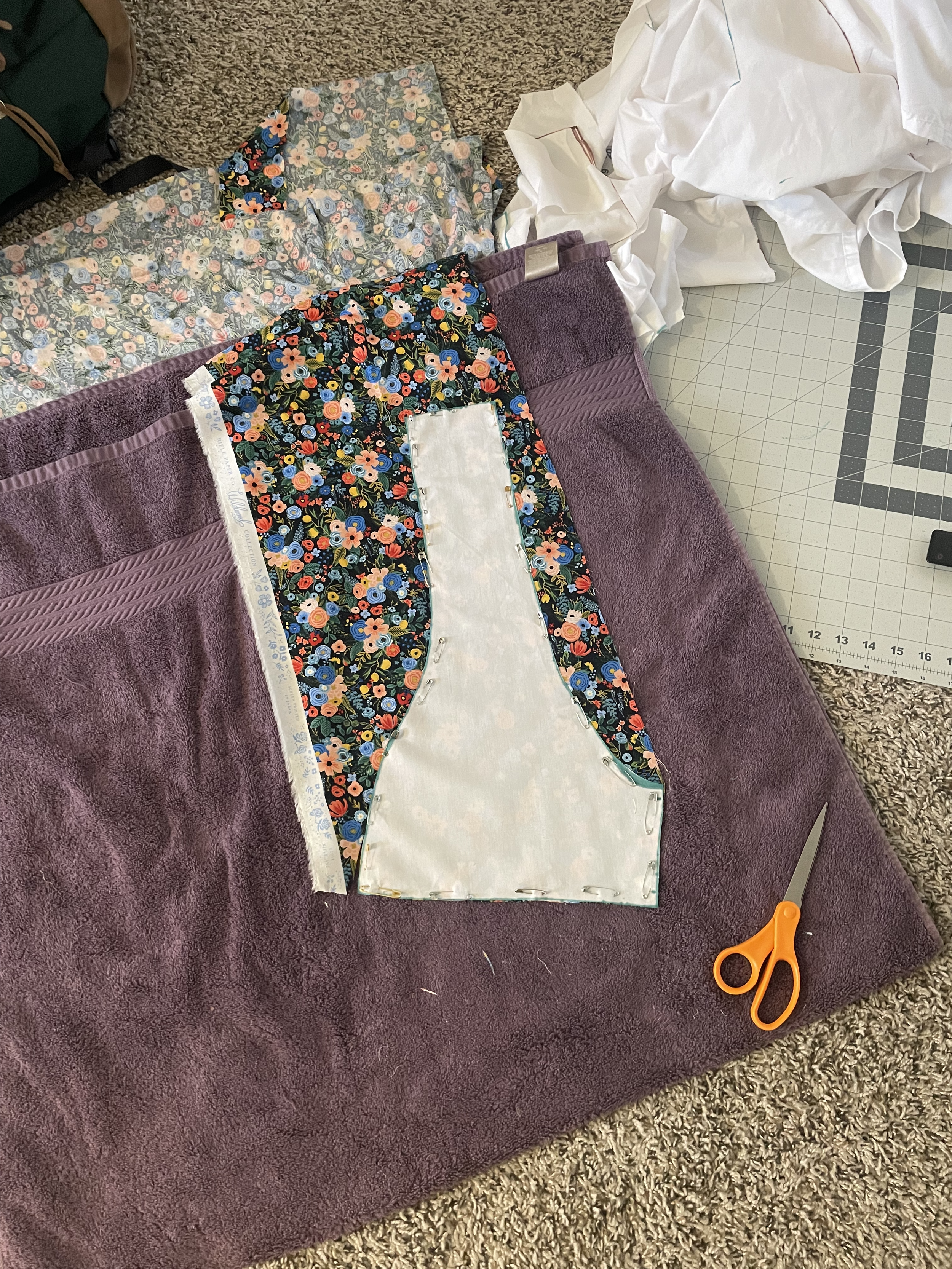
Cutting out fabric pieces for the top
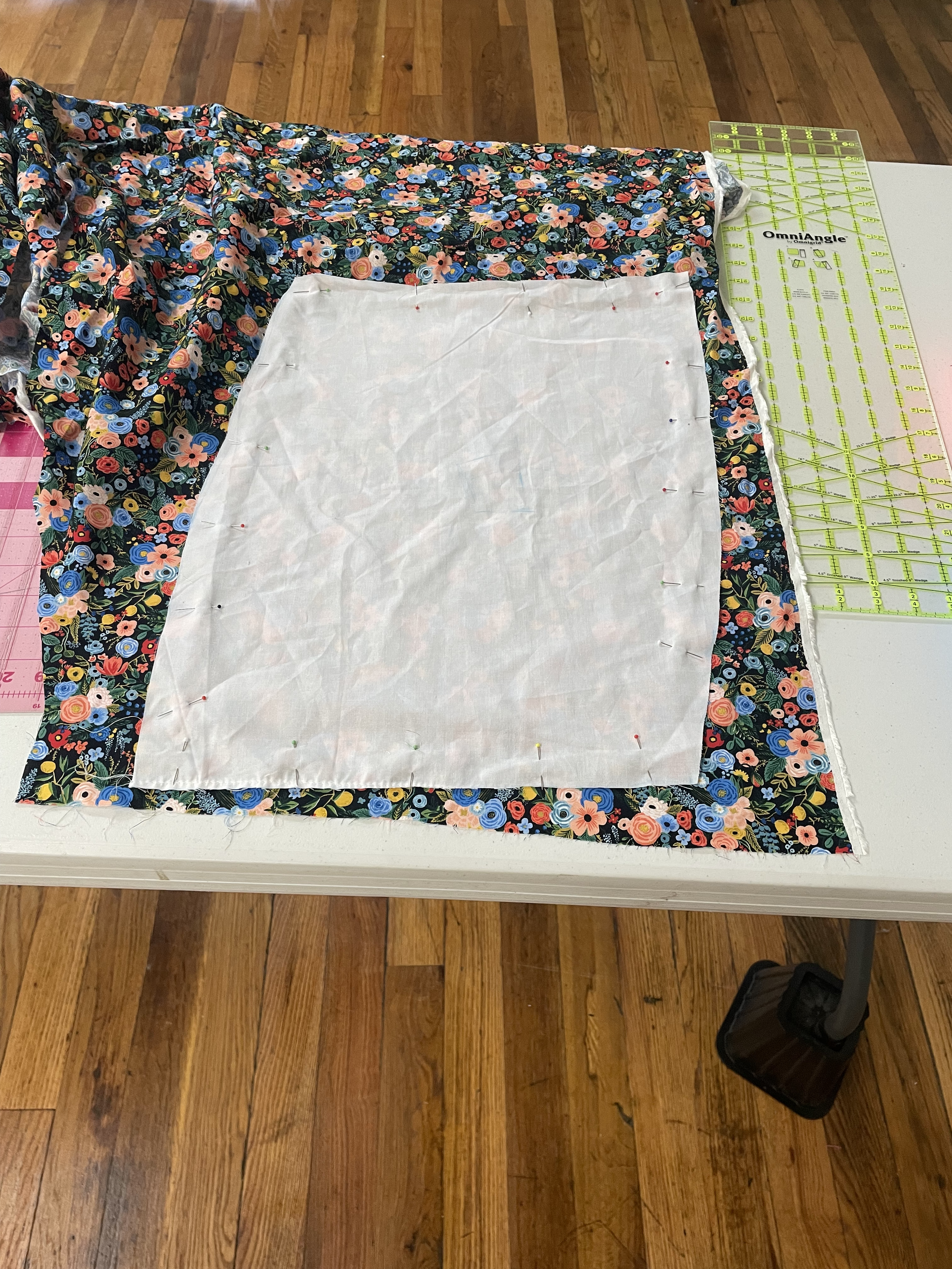
Pinning a skirt patten piece to the fabric
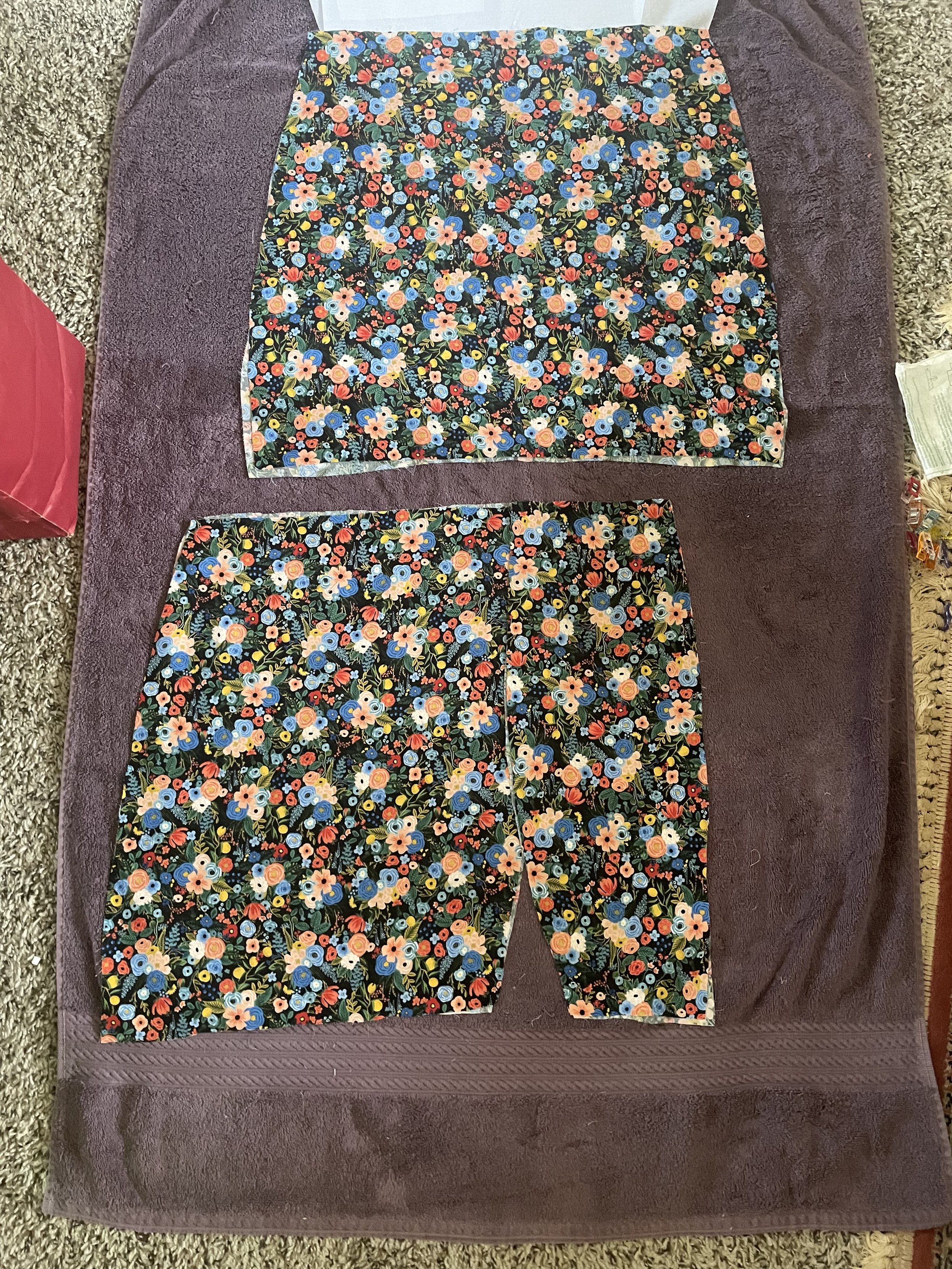
Final fabric pieces for the skirt
final products

Final Top
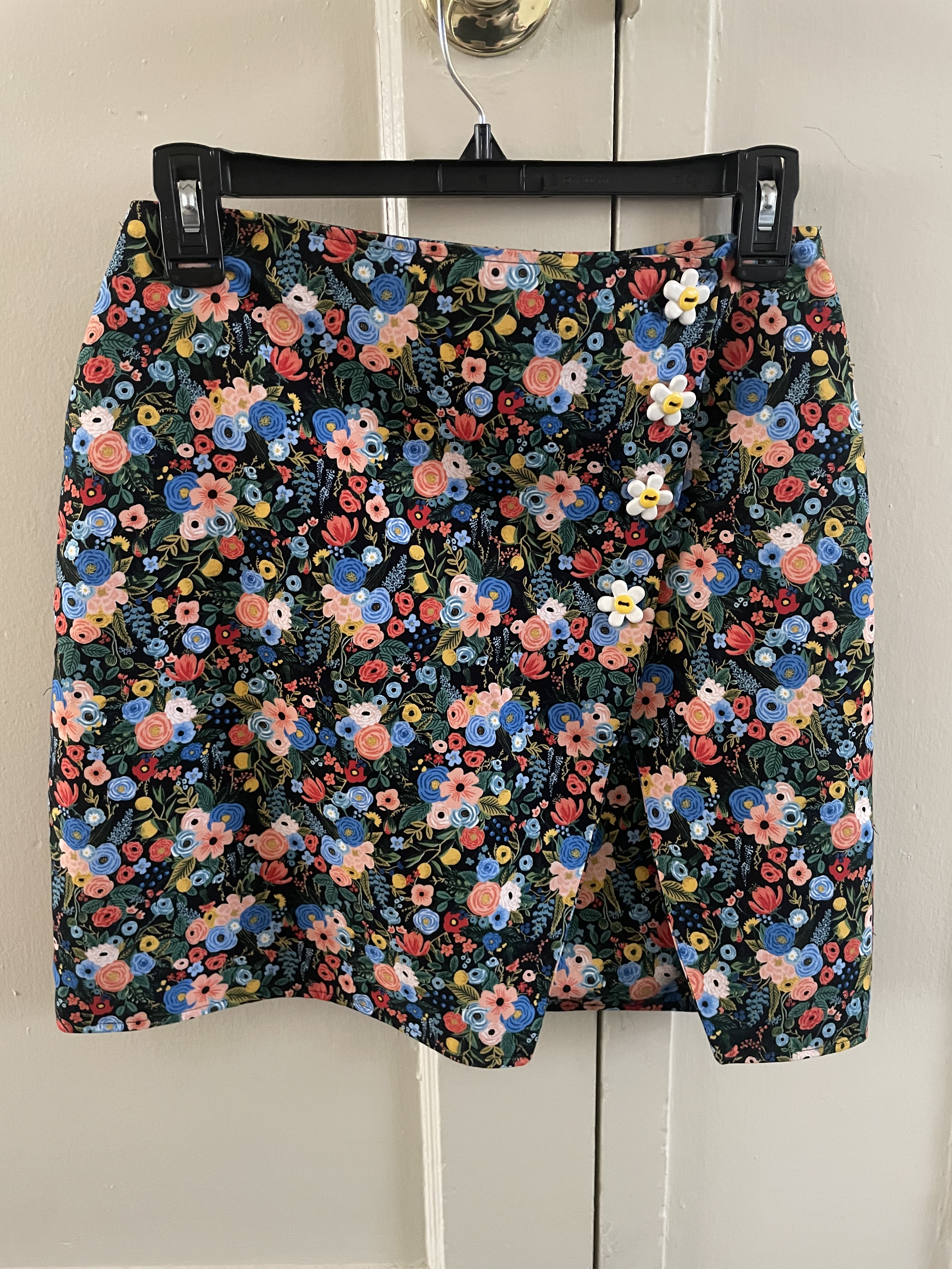
Final Skirt

Full Outfit
